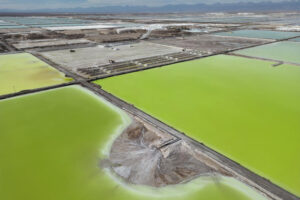A new study highlights nuclear blast wave speeds and how radiation circulates.
You only have seconds to get to a safe place after initial explosion.
Corners of walls facing the blast is where you want to run.
Here’s a fun fact that’s nice to know, but we hope you never, ever need to use: The best place to hide during a nuclear bomb explosion is in a strong, concrete structure, researchers at the University of Nicosia in Cyprus say in a new study in Physics of Fluids.
MORE FROM POPULAR MECHANICS ON APPLE NEWS
Scientists Are Testing a Pill to Make Dogs Stop Aging
Now, there’s really no fantastic place to be when the bomb goes off. Anything close to the explosion is instantly vaporized, and radiation immediately becomes a crippling concern. As a bonus treat, the blast wave generated by the explosion may then be strong enough to lift people into the air and knock down buildings.
But if you’re fortunate enough to survive the initial blast—likely, you weren’t outside, because that is the worst place to be—then hopefully you were holed up in a concrete structure. Even that may not even be enough.
“Before our study, the danger to people inside a concrete-reinforced building that withstands the blast wave was unclear,” Dimitris Drikakis, study coauthor, says in a news release. “Our study shows that high airspeeds remain a considerable hazard and can still result in severe injuries or even fatalities.”
The study’s computer modeling simulated blast waves through standing structures. In short, stay away from windows, doorways, and corridors. Also, tight spaces increase airspeeds, as the wave reflects off walls and bends around corners. “In the worst cases, this can produce a force equivalent to 18 times a human’s body weight,” the authors write.
As you avoid the windows, doors, and corridors, you need to immediately take shelter, study coauthor Ioannis Kokkinakis says: “Even in the front room facing the explosion, one can be safe from the high airspeeds if positioned at the corners of the wall facing the blast.”
Of course, you only have a few seconds between explosion and impending blast wave, so move quickly.
“Additionally, there will be increased radiation levels, unsafe buildings, damaged power and gas lines, and fires,” Drikakis says. “People should be concerned about all the above and seek immediate emergency assistance.” Message received.




